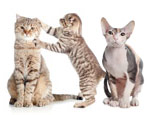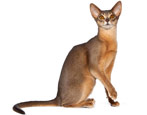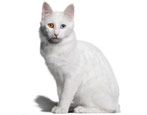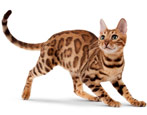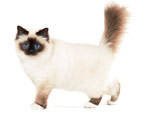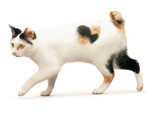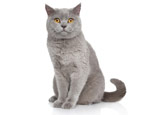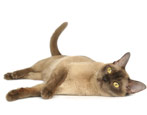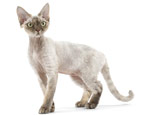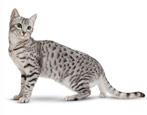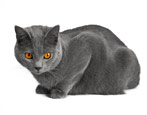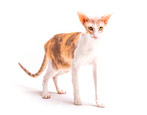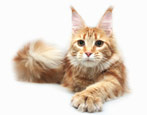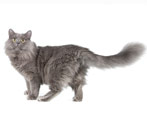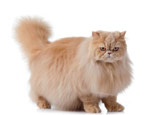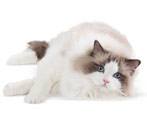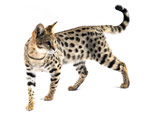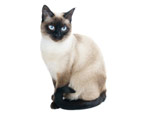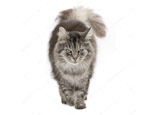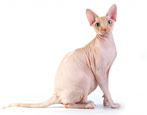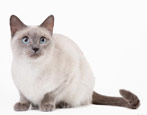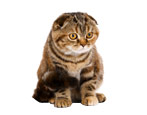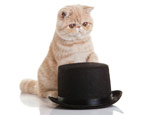Why do cats purr and how do they do it?
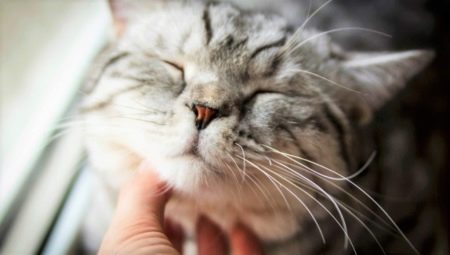
The purring of a beloved pet is a balm for the owner's soul and a manifestation of feline gratitude. Many people wonder why cats purr. and how they do it. This feature is present in many animals, and it even has a healing effect on the human body.
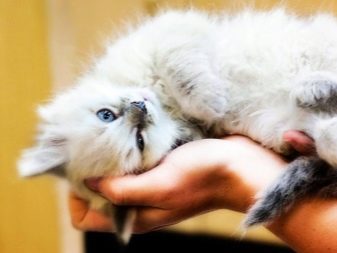
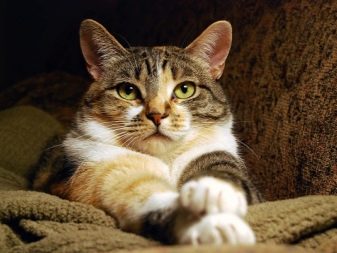
How does the purring happen?
Purrs are rhythmic, vibrating sounds that are long enough. The source of this sound is cats. Typically, this ability is a feline "secret weapon" with which they react to certain situations. Not only cats purr - some representatives of the animal world are able to reproduce similar sounds. Such animals include hyenas, badgers and mongooses.
The famous English writer Terry Prachett wrote about purring in his book "The Cat Without Fools". Many people remember quotes from this work: "Rumbling is not a trifle" and "For rumbling cats, everything is forgiven." We can agree with this, because cats are capable of emitting gentle and touching vibrations, for which most owners forgive their pets any leprosy.
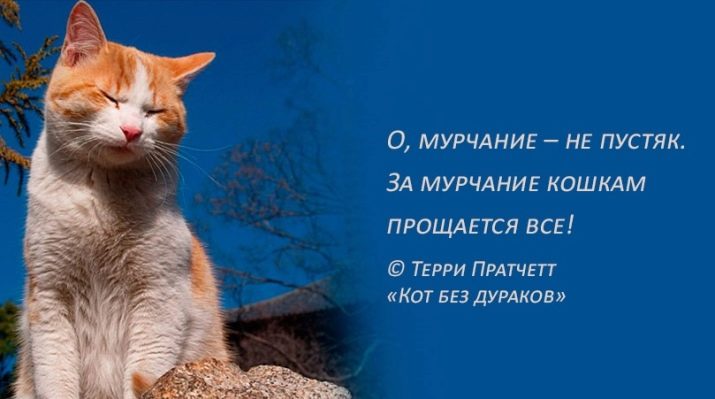
Cat owners value their pets for their wonderful purring trait, because with this ability they can calm a person down. Every cat owner knows that if his pet is next to him to sleep and starts purring, the person feels relaxation and falls asleep himself.
For this reason, the opinion has emerged that if a cat purrs, it means that she is calming herself, and this is a good sign.However, the mechanism for reproducing these sounds is still not fully understood.
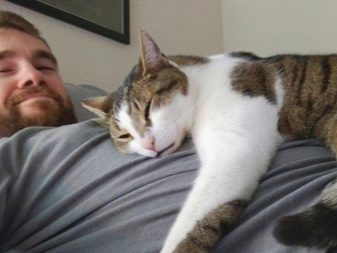
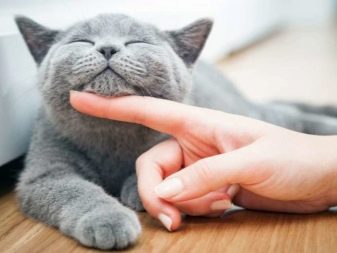
Scientists Robert Ecklund, along with Gustav Peters and Elisabeth Duthie, working at the University of Lund, released a scientific work that provided information on the frequency of purring of various representatives of the cat family. According to the information provided, the cheetah purrs at a frequency of 18.32-20.87 Hz, and the domestic cat reproduces sounds in the range of 21.98-150 Hz. In 2011, Ecklund, along with Suzanne Scholz, released another scientific paper in which they argued that different breeds of cats purr in their specific range.
In 2013, Ecklund and Peters were able to find out that the frequency of sounds made does not depend on the age of the cheetah.
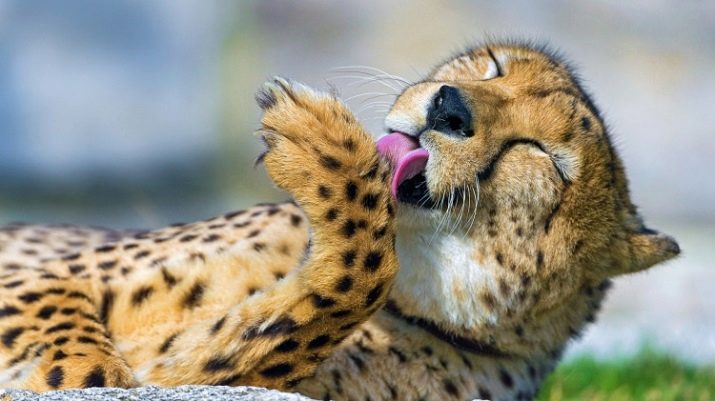
There are several opinions regarding the purring mechanism. Experts put forward different versions.
- False vocal cords. The animal has simple vocal cords, with the help of which others hear the traditional "meow". This sound can only be heard when the cat opens its mouth. And during the purr, the mouth of the beast is closed and the reproduced sound is formed due to vibration, which goes to special bones under the tongue. With this option, a person hears sounds similar to a quietly working tractor.
- Sinus sinuses. This variation has to do with the work of the vascular system. Based on the emotional component, a change in blood pressure occurs, due to which vibration occurs in the cat's chest. Frequency fluctuations occur in the cranial air sinuses and are transformed into recognizable feline sounds. Large cat breeds are characterized by thicker sinus sinuses, which are hidden under a layer of cartilage. For this reason, unique sounds are only available to domestic cats and small species of the feline family.
- Lungs... Since the rumbling occurs during inhalation and exhalation, we can say that the lungs are involved in this sound. Due to active participation in the action of the intercostal and diaphragmatic muscles, a change in the frequency of sounds is observed.
No one can say with certainty what causes cats to purr. There is an opinion widespread among zoologists and veterinarians, which is based on the fact that a pet makes vibrational sounds due to its emotional state.
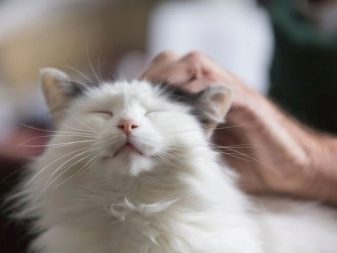
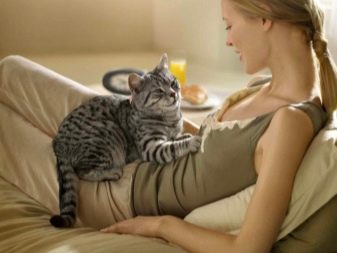
Main reasons
There are many versions that explain the reason for the rumbling of domestic cats. The following options are recognized as the main ones.
- Gratitude. Cats purr when they show gratitude to a person for sweets, affection, touch and warmth. In this regard, a barely audible rumbling is a sign of a contented cat.
- Relaxed state... If the pet is in a calm state, then he begins to purr. The same situation can be observed when kittens, settling down in a calm and peaceful state, suck their mother's milk. Since it will not be possible to meow and eat at the same time, they purr barely audibly.
- Show your emotions. Most people assume that when a cat's purr is heard, it means that the cat is singing its own song. With the help of different intonation, pronunciation of sounds and vibrations, pets demonstrate their mood at the moment. This is comparable to people who, in a relaxed state, begin to hum certain tunes under their breath.
- Conversations of kittens with a mother-cat. With the help of rumbling, little children tell their mother that everything is fine with them, they are well-fed and satisfied. This indicator is important among wild felines, as parents can often leave their children alone when going hunting.
- With self-medication. If the cat is sick or stressed, she begins to purr in order to find peace and restore the state of her body.With the help of vibrations that cats reproduce, circulatory processes are established, which help to improve metabolism. Purring helps cats to warm up or calm down. At such moments, it is better not to touch your pet and let him recover on his own.
- Before bedtime. When an animal is about to sleep, it can purr quietly. Thanks to the uniform vibration, he manages to find peace and tune in to sleep. Scientists conducted studies in which it was found that when rumbling, it is impossible to hear breathing and heart rate, since the vibrations are strong in their manifestation. Due to this feature, pets get good sleep at night.
- Demonstration of hunting instinct... Rumbling can be heard at the moment when the animal is watching a bird through a window or watching a fluttering leaf in nature. With the help of such manifestations, the animal shows its interest in objects.
- Self-defense display. The cat may purr loudly if it senses danger. It is better not to touch an animal that is in this state, as you may be faced with the fact that the pet may bite or attack.
- Feeling of fear. With severe fright, manifestations of an exciting rumbling may be observed. This suggests that it is better not to touch the animal, or, on the contrary, it feels its defenselessness and needs protection.
- The goal is to get something. If a pet wants to get a treat from its owner, then he begins to purr. In most cases, this technique works flawlessly, and the cat gets what he wants.
- Disease. Rumbling may indicate a disease. In this case, the animal will reproduce loud and restless sounds. If you experience this behavior, you should contact your veterinarian.
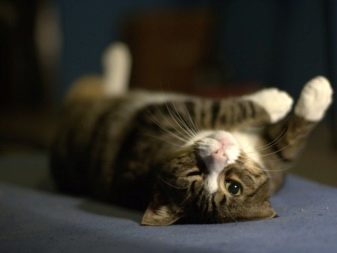
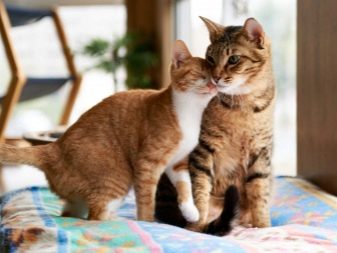
Cats can growl for any reason. However, only very attentive people who are not indifferent to their little friends are able to understand the true reason for this behavior, and they carefully monitor the well-being and mood of their pet.
Why does a cat purr when you pet it?
It is believed that human touch is an annoying factor for a cat. But it is not always possible for an animal to react negatively to a person's touch. Few cats will enjoy being petted against the grain or when they are in a bad mood. If the animal does not like something, then it begins to twist its tail and can even scratch a person.
If your touch is endowed with tenderness, when the pet wants to get his portion of affection, then in response to the touch, you can hear a satisfied rumbling, which will symbolize satisfaction. Cats are endowed with sensitivity to the emotional state of their owner and determine when they are being touched with love. For this reason, they purr rather, and some even crumple a blanket or their owner with their claws, demonstrating reciprocity and trusting attitude.
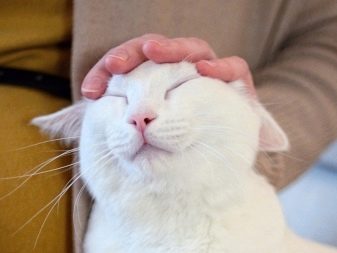
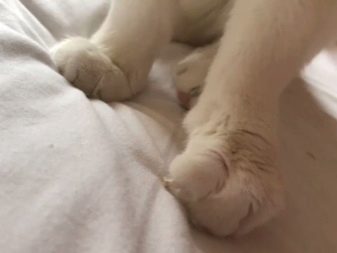
Owners of female cats are faced with a situation when the animal, when stroking, lifts its butt up and purrs. This behavior can symbolize the beginning of estrus. It may also indicate that the animal simply greets its owner.
Communication with the help of rumbling with their relatives
Purring allows animals not only to communicate with humans, but also among themselves. Sounds like these serve as a warning or to convey certain information.
- A quiet purr indicates a friendly mood and calmness.
- Loud sounds will symbolize the dominance of the animal over its relatives. With the help of rumbling, the cat informs that there is no need to fight with it, and the weaker opponent will understand that there will be no attack from the other side.
- Rumbling can demonstrate defenselessness and a request not to attack her.
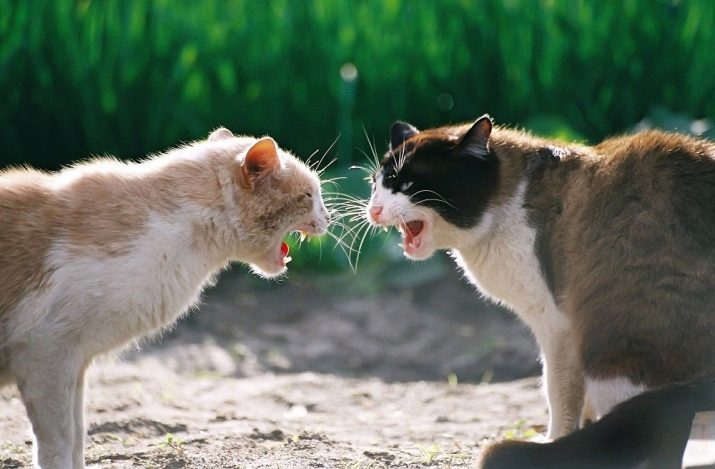
It is always interesting to follow the communication between mom and kittens.Little children also know how to purr if they feel hungry or vice versa, they are already fed and happy. During meals, as described earlier, the kittens also purr.
Mom hums, notifying her children that they are under reliable protection and nothing threatens them. For example, she begins to "vibrate" as she approaches the children, showing that she is very close and there is no need to worry.
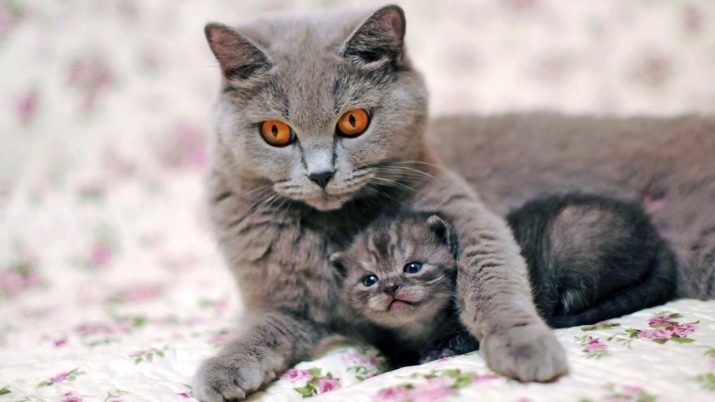
Purring allows cats to heal each other. If one cat is sick, the second animal can be with him, purr, acting as an encourager and calmer.
Is there a benefit to humans?
The vibrations that a cat reproduces during rumbling are 22-150 Hz. This frequency range allows wounds to heal and stimulates bone growth. Vibration techniques are commonly used in the medical industry. Under the influence of low frequencies, the body begins to produce endorphins, which act as natural analgesics. They can reduce pain and have a positive effect on the healing process.
Purring is known to be a stamina attribute. This was known in ancient times, due to which 9 lives were attributed to cats. In the modern world, everyone knows that felines only have 1 life, but they tolerate severe injuries more easily, and the healing process is much faster when compared to dogs.
For owners who are often nervous, the little four-legged friend can be a personal antidepressant. Animals make vibrating sounds, due to which a person begins to calm down. This is comparable to meditation from spiritual practices, where in a certain posture you need to pronounce a certain vibrating sound.
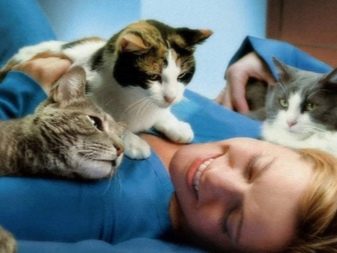
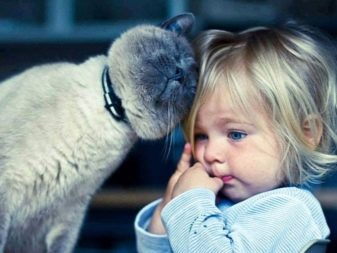
A cat that lies on its chest and purrs can act as a household healer. Owners of furry pets noted that after contact with a cat, exacerbations of cardiovascular diseases in them quickly went into remission. A similar situation was observed with problems with hypertension. In the West, the practice is actively used in which cats are used in the rehabilitation therapy of sick and elderly people.
What if the cat doesn't purr?
The purring of our smaller brothers will not leave anyone indifferent. Purring cats are a symbol of comfort and special warmth. Some pet owners report that they feel like the cat is sharing its secrets and how it spent the day when it purrs. But not all people are familiar with this phenomenon. Some people get a pet that never purrs. In this case, you need to know what to do.
The absence of feline sounds may be related to heredity. As other reasons, the characteristics of the animal's temperament should be considered, along with a possible resentment against its owner.
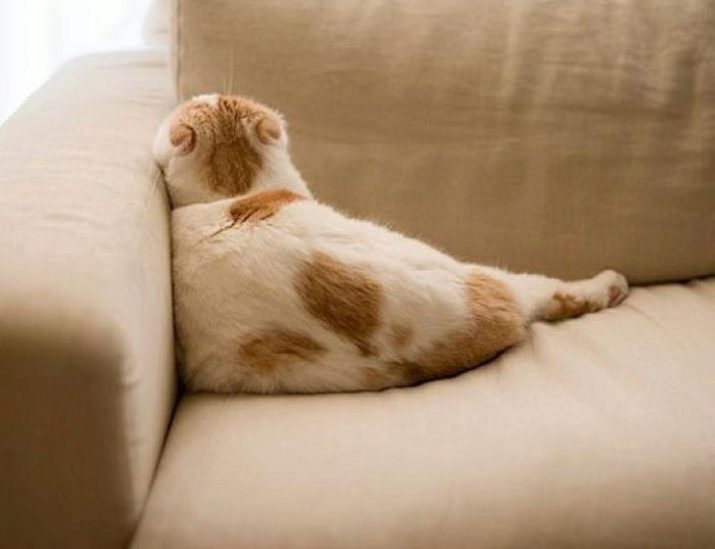
If the cat has abruptly stopped purring, you should take a closer look at it. Perhaps the animal no longer trusts the person or is feeling uncomfortable. If the animal is constantly meowing, then something is bothering him. Typically, this behavior manifests itself after the child appears in the family. The animal considers itself superfluous and begins to get nervous. The pet may begin to draw attention to itself and be mischievous. The owner may react negatively to such manifestations, which is undesirable.
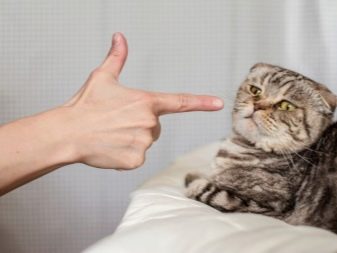
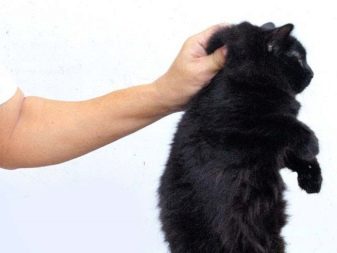
It is better to try to determine the cause of the dissatisfaction and show your pet your love and tenderness. With these actions, you can change the attitude of the cat and again make it purr rather.
If the animal has stopped rumbling abruptly, you need to carefully examine your pet. The chances are that the cat is in pain or is feeling weakened. Sometimes the reason can be hidden in the pet's banal lack of mood. You should take the animal in your arms, caress it and say pleasant words to it.Treating your cat to goodies will cheer your cat up. If the situation does not change, you should go to the veterinary clinic, since the absence of purring may indicate diseases of the vocal cords or problems with brain activity.
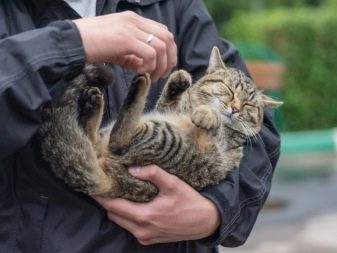
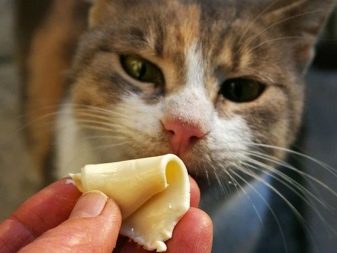
Interesting Facts
There are many interesting facts associated with purring and other features, which every feline lover should be familiar with.
- People who associate the sound of cats with a working tractor are almost right. The diesel engine at idle runs at approximately the same frequencies as the cat - 15-150 Hz.
- All pets are distinguished by their uniqueness, but some animals were able to achieve worldwide fame and got into the Book of Records. The popularity was gained by a cat named Merlin, who lives in South-West England. The merit of the cat is that its rumbling reached 67.8 decibels - this is comparable to a working washing machine.
- According to cat lovers, females have a special purr power. Connoisseurs of fluffy pets report that it is the females that contribute to the good recovery of their owner's strength through rumbling.
- The color of the animal does not affect its healing ability. However, there is an opinion that white cats can endow their owner with energy, black cats can calm down a violent human disposition, gray animals will act according to the situation, calming or encouraging. Red-haired representatives will cheer up, and tortoiseshell representatives will bring profit and luck.
- Purring is not only the privilege of adult animals. Even newborn kittens can hum, but only very quietly. Their sounds are heard only by the mother.
- Urcha, animals talk not only with humans, but also with other animals, such as dogs. Approximately 95% of owners interact with their pets and seek a meow or meow response. In this way, the cat maintains a dialogue.
- Scientists have calculated that cats know about a hundred sounds, while a dog knows no more than ten. Also, a cat can pronounce seven letters: f, g, p, m, n, x, v. She also has access to memorizing some simple words. It should be noted that the training will be very lengthy. There is one known cat who was able to say the word "me" and, if he wanted to eat, he shouted: "me-ee." Some pets repeated the words "mom" and others.
- Experts believe that only a cat is capable of purring. However, there is evidence that this opinion is wrong. It has been observed that the lynx and the ocelot are also able to hum. Larger representatives also know how to purr. For example, a lion is capable of humming in the 114 decibel range.
- No animal, except a cat, can keep its tail vertically directed while walking. Its wild cousins place the tail in a horizontal position or between the hind legs.
- While communicating with their owner, cats can not only purr and meow, but also express their mood with the help of tail rotations, looks and poses. If you pay attention to the tail, you will notice that when its tip shakes, it means that the animal loves its owner and is strongly attached to him. During vigorous movements of the tail, the pet is irritated, and when relaxed, the animal will occasionally wag its tail.
- Sometimes tail flicking can indicate that the cat is facing a choice. This can be seen in rainy weather, when she does not know if she needs to go outside or is it better to stay in the house.
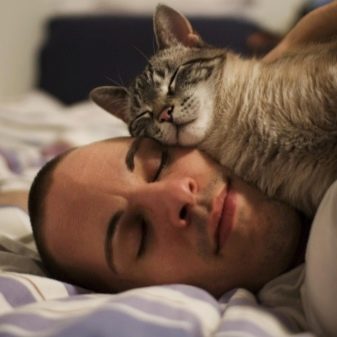
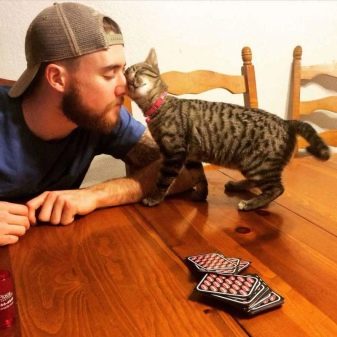
See why cats purr below.
